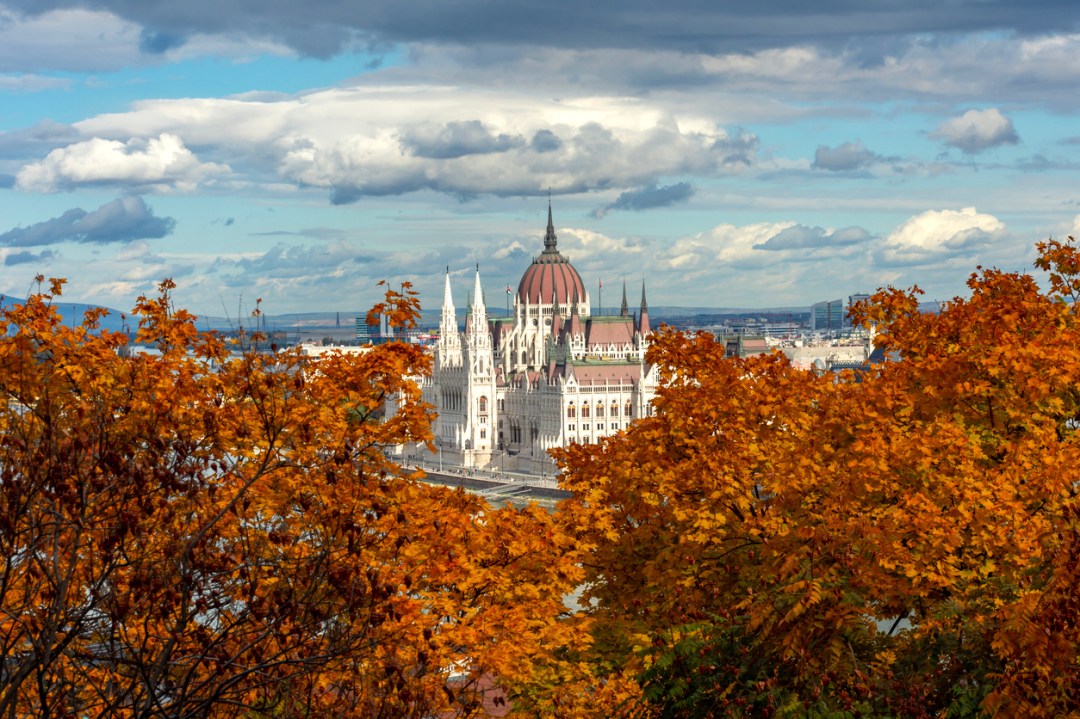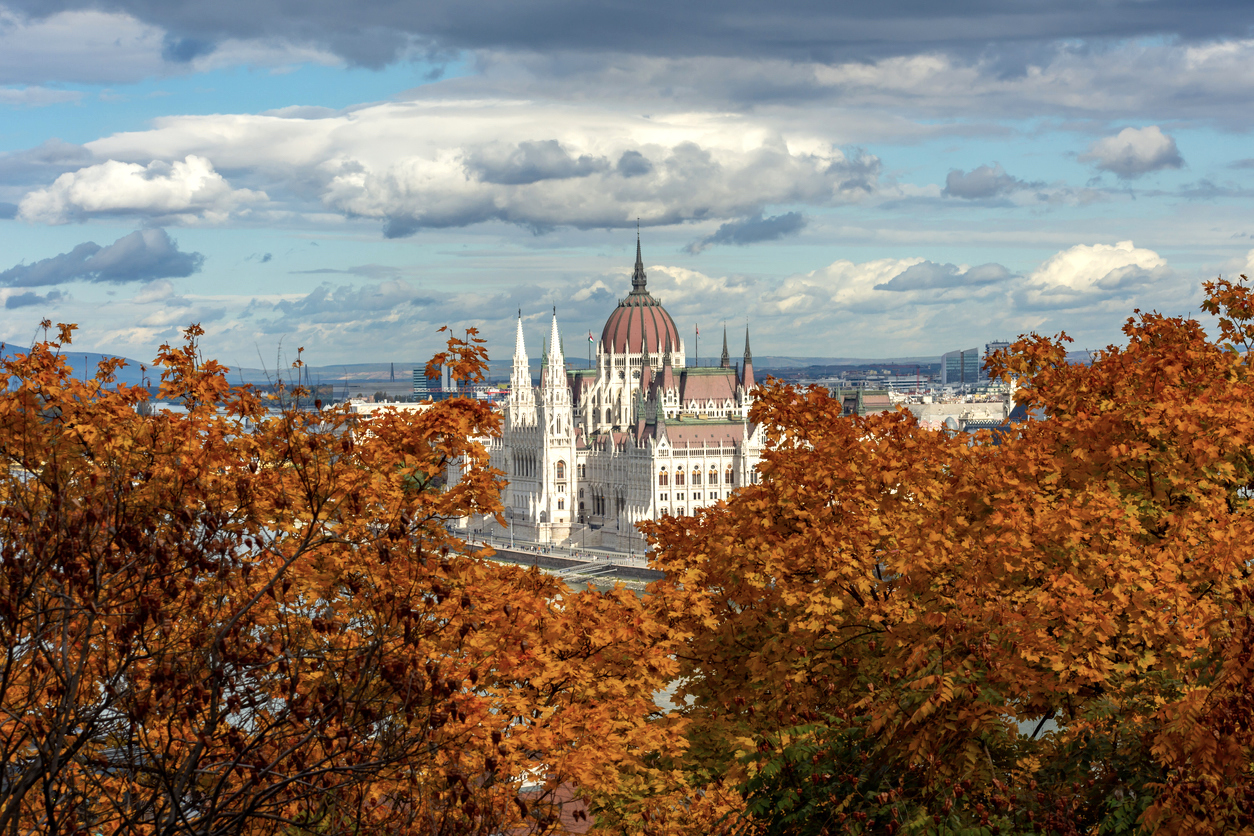A couple of weeks ago, I made the dish I always make at this time of year. It’s a Hungarian gulyás – or more correctly, a pörkölt – a mixture of beef, onions, peppers, tomatoes and paprika, stewed very slowly and served with plenty of sour cream.
It’s appropriate this dish should be from Hungary, as no season suits the country better. Come to that, no country suits the season better either. It isn’t just that the Buda Hills look ravishing once the trees start to turn rust and golden or that the city’s bridges look more graceful and melancholic than ever. It isn’t even the mist – not to say fog – that comes off the Danube, suspending buildings like their majestic parliament house or Citadella fortress in ghostly silhouette. No, there is something else, something a little mysterious and even spooky going on. Hungary and autumn seem to work in tandem, to be conspiring with each other.
As the evening approaches, Hungarian cemeteries are festooned, carpeted with lit candles
Some of it’s easy to explain. The highlights of Hungarian cooking are hardly foods for hot weather. Spicy gulyás soup, Jókai Bableves (a smoky bean stew served with crusty bread) and more sumptuous things like Gundel pancakes – crepes filled with a mixture of walnuts, raisins, rum and cream, flambéed in hot chocolate sauce – are all best sampled once the cold sets in. The same goes for their red wines, like Kékfrankos and Egri Bikavér, known as ‘bull’s blood’. Their most famous export, paprika, is also linked inseparably to this time of year. As the green peppers turn first brown, then black, then a pillar-box red, they’re hung profusely on strings from the eaves of houses to dry. Only when they clack together in the early autumn breeze are they deemed ready for harvesting and milling, to the eight or so varieties sold in the shops, from édesnemes (noble sweet) via rózsa (rose) and through to erős (strong and fiery) – the different colour-shades faintly autumnal too.
Then there’s Hungary’s underground network of hot springs, whose eggy-smelling, mineral-laden waters fizz through thermal baths all over the country. Though an outdoor early morning bath’s good at any time – a perfect way to wake up – nothing suits them better than the autumn when it’s chilly enough for steam to billow up atmospherically off the water’s surface and to make the semi-naked dash through the morning air bracing, but not heart-stopping.
Yet there’s much more to it than this, a sense the country reaches a peak of self-expression in October and November. ‘Autumn and Buda were born of the same mother,’ wrote Budapest author Gyula Krudy. The country’s foremost writers, adds historian John Lukacs, ‘had autumn in their hearts.’ And however much you love Hungary’s capital, you can’t get away from its sadness, a feeling of loss and decay. Its high summer was over 100 years ago – the ‘American Tempo’ of the late 19th century, a time of massive expansion and the installation, with its cafes, Parisian streets and underground trains, of the slickest of mod cons. What’s followed has been a steady and picturesque decline, as Budapest, with its flaking paint, sooty statues and tarnished oak doorways, has given in – to use a Hungarian wine expression – to aszúsodása, a kind of ‘noble rot’.
Much of the country’s history is based on losing things and having to live with that loss. The Hungarians – a Thousand Years of Victory in Defeat runs the title of a book by Paul Lendvai, one of Hungary’s best historians. Whether it’s the loss of two-thirds of its territory at the 1920 Treaty of Trianon or its unfailing ability to pick the wrong side in a conflict, Hungarian history is hardly upbeat. And many of its key tragedies, as Lukacs points out, happened to fall in the months of October and November: the execution of 12 generals after the doomed 1849 war of independence, the collapse of the ancient monarchy in 1918 or, most recently and catastrophically of all, the mad hopes and terrible aftermath of its crushed 1956 uprising against the Kremlin, whose 12 days of hope ran from 23 October to 4 November (you can still see banks of candles commemorating it at this time of year in the country even now).
These events haven’t defeated Hungary. If you don’t have what you love, you must love what you have, as the saying goes, and the country has made something stylish out of its beleaguered past. Yet you can’t avoid the (autumnal) theme of death in Hungarian history, often self-inflicted. So many of its luminaries have committed suicide. Istvan Szechenyi, the virtual founder of modern Hungary, killed himself with a shot to the head in 1860, inaugurating a long tradition. The novelist Sandor Marai finished himself off in 1989, the same way, while the country’s great poet, Attila Joszef hurled himself under a train. In 1933, Rezső Seress wrote ‘Gloomy Sunday’, the country’s notorious ‘suicide song’ and then committed suicide himself. Perhaps it’s Hungary’s geographical position that’s had an influence, perhaps that its exquisitely impenetrable language shares no similarities with any surrounding countries. ‘We live in a very strange position in the world… Somehow we are in limbo,’ said dramatist Peter Muller, ‘and if you are in trouble, if your life is difficult, it is the root that can save you.’ In time, Hungary’s crop of historical suicides begins to shock you less, seeming less an act of wilful self-slaughter and more a last-minute stab at self-determination in lives that seem woefully beyond their owner’s control.
Here again, Hungarians have made something elegant from tragedy. ‘Temetni Tedunk’ goes a national saying: ‘We know how to bury people.’ Visit a Hungarian cemetery in autumn or see the huge number of roadside memorials to the dead and you’ll realise this is true. As October passes, in the lead-up to All Souls’ Day – which fell on November 2 this year – the flower sellers do a roaring trade, people dashing to commemorate those they loved and who are gone. As the evening approaches, Hungarian cemeteries are festooned, carpeted with lit candles – so many that, like city street lamps, they turn the night sky above them orange. Then the mourners go home, Hungarians say, to drink together, get sentimental about their lost loved ones and weep. Yet this too is not straightforwardly bleak. On a visit to Hungary in 1897, visitor H. Ellen Browning described seeing in bars more than one Hungarian the worse for wear, head in hands and sobbing volubly. ‘But,’ she explained, ‘this is only when he is having a good time and thoroughly enjoying himself.’
‘The man who can be content with one visit to Hungary,’ said Christopher Sidgwick, another traveller, ‘ought simply to be led away to a quiet corner and shot. The place grows on you and grasps you and seems to squirt a divine soda water into your blood. Never shall I agree to leave Hungary alone! Never shall I agree to a final visit!’
Broadly, I’d agree with Mr Sidgwick – I’ve been nearly 20 times myself – but should add a proviso of my own. Never again shall I choose to visit Hungary outside of the autumn, the season above all when the country blooms and flourishes.
This article is free to read
To unlock more articles, subscribe to get 3 months of unlimited access for just $5








Comments
Join the debate for just £1 a month
Be part of the conversation with other Spectator readers by getting your first three months for £3.
UNLOCK ACCESS Just £1 a monthAlready a subscriber? Log in